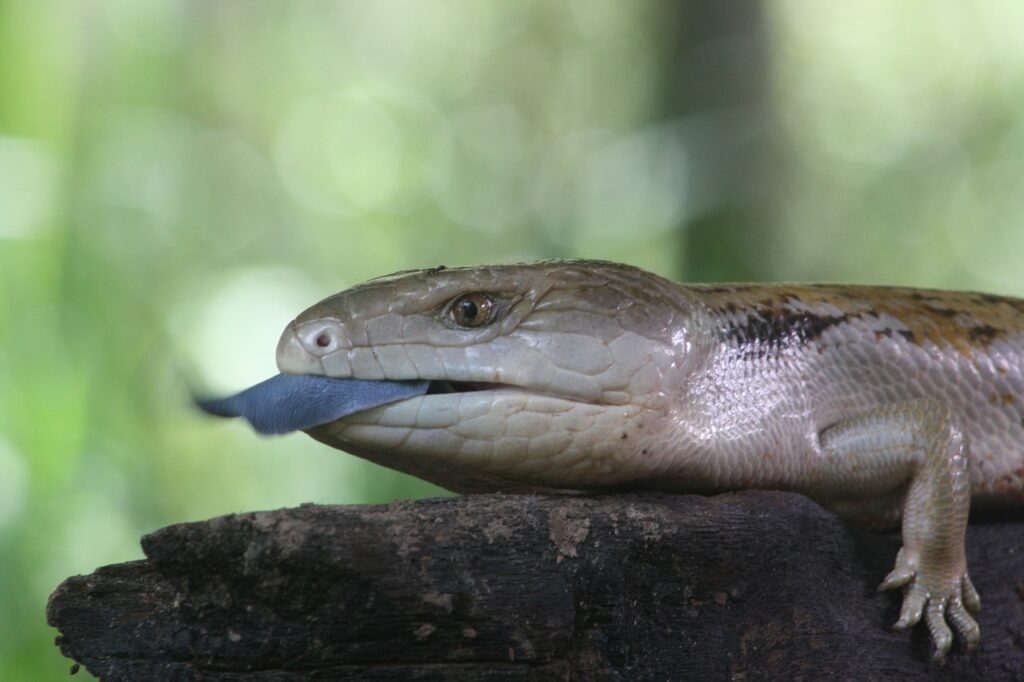EASTERN BLUE-TONGUED SKINK
Tiliqua scincoides

LENGTH

60 cm
WEIGHT

1 kg
LIFESPAN

25 years
The eastern blue-tongued skink is a species of lizard in the family Scincindae. This species is popular as a pet due to its relatively small size and friendly personality.
General characteristics
This lizard grows to a length of up to 60cm, with a tail of about 20cm. Its legs are tiny in comparison to the body and the head is pointed, with the male’s being slightly wider than the females.
It has a smooth skin covered with overlapping scales and has small bony plates. The colour of its skin can vary, but is usually brown and cream-coloured with black transverse bands. The ventral region is silver or grey.
It is characterised by its large, bright blue colored tongue, which it uses for communication and as a lure to attract predators.
Feeding
It is an omnivore that feeds on plants, fruits, insects and other reptiles.
Behaviour
They are diurnal animals and are generally active during the day. They like to bask in the sun and can be seen warming themselves on rocks, logs and other similar objects. They show little aggression and are docile and shy.
As mentioned above, they use their tongue as a defence mechanism. When they feel threatened, they inflate their body and open their mouth wide to show their bright blue tongue. They can also bite and attack with their tail, which is relatively strong and muscular.
Reproduction
Blue-tongued skinks are ovoviviparous, i.e. the young develop inside the mother’s womb, at the same time as they are inside an egg. They are mostly solitary, except when they come together to mate between September and November. After a gestation period of three to four months, the female gives birth to up to 14 young.
Threats
The main threat to blue-tongue skinks is habitat loss due to urbanisation and agricultural expansion. They are also illegally trapped for the exotic pet trade, which has affected their population in some areas.
Distribution
It is a species native to eastern and north-eastern Australia. It inhabits savannahs and semi-desert open country sites.

Did you know?
They are neither poisonous nor deadly to humans.
They can be found in urban areas, such as in gardens or in pipes.
They are slower than other lizards when moving.
Conservation status
